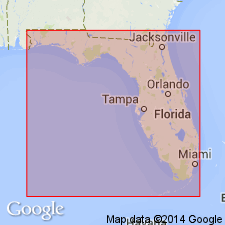
- Usage in publication:
-
- Bermont Formation
- Modifications:
-
- Named
- Dominant lithology:
-
- Marl
- Sand
- AAPG geologic province:
-
- South Florida province
Summary:
Named Bermont Formation for Bermont quadrangle, Charlotte Co., FL. Consists of 3 m of gray, unconsolidated sandy shell marl. Unit unconformably overlies the Caloosahatchee Formation and underlies the Fort Thompson Formation. The Bermont is of middle Pleistocene age.
Source: GNU records (USGS DDS-6; Reston GNULEX).
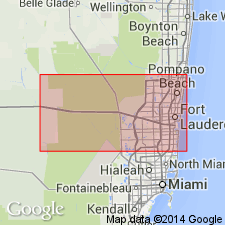
- Usage in publication:
-
- Bermont Formation
- Modifications:
-
- Revised
- AAPG geologic province:
-
- Florida platform
Summary:
Bermont is the least known and most poorly studied of the major surficial units of Everglades basin. Previously called Glades Unit by Hoerle, 1970. "Still not accepted by the USGS, but has been adopted by several workers in Pleistocene paleontology." Many new and interesting gastropods have been discovered recently in the Bermont. Formation is approximately 10 m thick. Basal 2 m has been informally named the Holey Land Unit by local paleontologists.
Source: GNU records (USGS DDS-6; Reston GNULEX).
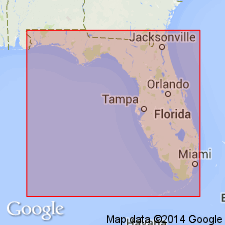
- Usage in publication:
-
- Bermont Formation
- Modifications:
-
- Revised
- Overview
- Age modified
- AAPG geologic province:
-
- Florida platform
Summary:
Port Charlotte Group is composed of the early Pleistocene Caloosahatchee and Nashua Formations (correlatives) and the middle Pleistocene Bermont Formation. Group unconformably overlies Pliocene Tamiami Group and unconformably underlies late Pleistocene Hialeah Group. In southwestern FL, Bermont Formation is 1.5 to 3 m thick and is typically gray or tan, unconsolidated fine to medium quartz sand. Mollusks abundant and well preserved. At Belle Glade, Palm Beach Co., unit is a gray shell marl at least 9 m thick. Bermont is separated from Caloosahatchee and Nashua Formations by a regional unconformity. Stratigraphic position between establishes its Pleistocene age and suggests that it is middle or late Pleistocene. Probably correlates with Canepatch Formation of SC.
Source: GNU records (USGS DDS-6; Reston GNULEX).
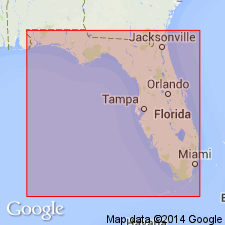
- Usage in publication:
-
- Bermont Formation
- Modifications:
-
- Age modified
- AAPG geologic province:
-
- Florida platform
Summary:
In southern FL, marine beds deposited during the early Pleistocene constitute the Bermont Formation. Age has been underestimated by previous workers. Terrestrial mammalian fauna in layer overlying the Bermont indicates a late early Irvingtonian age (1.5 to 1.0 m.y.). Underlying layer is also early Irvingtonian based on terrestrial vertebrate fossils of ages less than 1.7 m.y. (Hulbert and Morgan, 1989, Pap. Florida Paleont. No. 2, p. 1-19; Webb and others, 1989, Quat. Res., v. 32, p. 96-110). Bermont Formation overlies the Caloosahatchee Formation (late Pliocene) and underlies the Fort Thompson Formation (late Pleistocene).
Source: GNU records (USGS DDS-6; Reston GNULEX).
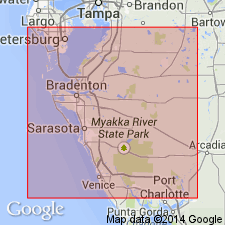
- Usage in publication:
-
- Bermont Formation*
- Modifications:
-
- Areal extent
- AAPG geologic province:
-
- Florida platform
Summary:
Bermont Formation overlies Caloosahatchee Formation in southwestern FL. Age is between 1 and 0.5 Ma (DuBar, 1974) [Pleistocene]. Represents fourth of four marine transgressions, each separated from the other by an unconformity.
Source: GNU records (USGS DDS-6; Reston GNULEX).
For more information, please contact Nancy Stamm, Geologic Names Committee Secretary.
Asterisk (*) indicates published by U.S. Geological Survey authors.
"No current usage" (†) implies that a name has been abandoned or has fallen into disuse. Former usage and, if known, replacement name given in parentheses ( ).
Slash (/) indicates name conflicts with nomenclatural guidelines (CSN, 1933; ACSN, 1961, 1970; NACSN, 1983, 2005, 2021). May be explained within brackets ([ ]).

